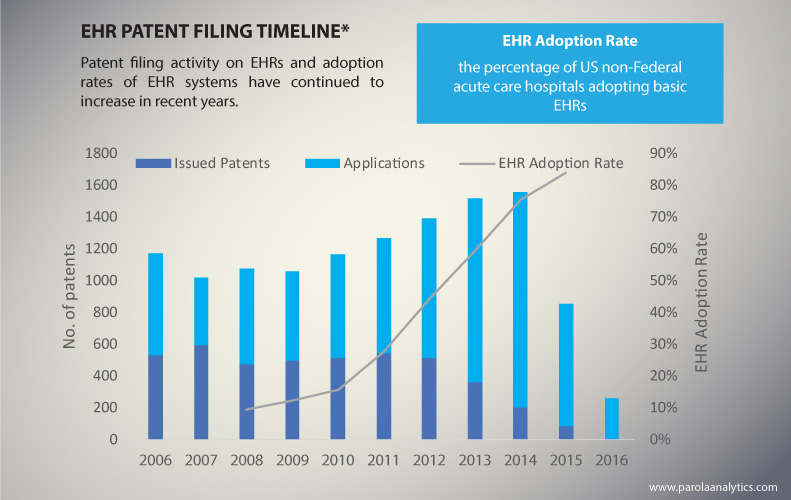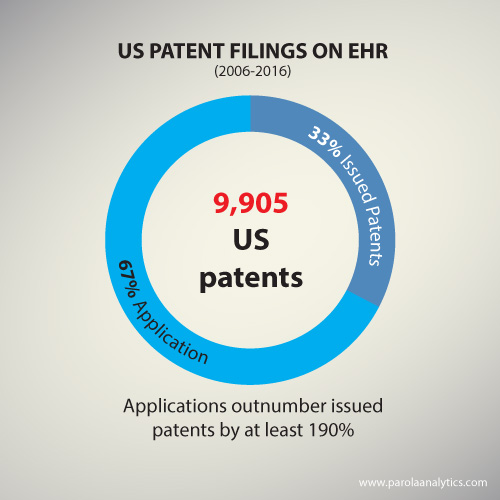The United States spends more than any other country on healthcare per person. In 2015, it spent $3.2 trillion in healthcare. By 2025, it will spend about 19.8% of GDP towards healthcare.[1] Despite this, the US is behind other developed nations in healthcare services. Compared to other developed countries, the US still lacks universal health coverage, a hot-button topic for most Americans. To address the burgeoning healthcare costs, the federal government has been implementing various measures to improve healthcare delivery.

The use of electronic health records (EHR) is one such approach. Healthcare workers have relied on paper patient health records for . Most American hospitals spend 25% of available funds on administration.[2] With EHRs, a doctor can have a complete and organized view of a patient’s health and medical information in one place. EHRs also help doctors stay updated on patients’ conditions and treatments while tracking progress over time.3 Using EHR systems will also allow nurses to spend 15-26% more time monitoring patients.2

At Parola Analytics, we analyzed US patents related to EHR to identify the key players and gain additional insights. Top revenue-producing HIT companies4 like Optum, Cerner, Cognizant, McKesson, Dell, Philips, Xerox, Epic Systems, GE Healthcare, and EMC Corp. all have patents about EHR systems and software ranging from health data gathering and analysis to data integration. Based on our analysis, the patent filing activity on EHRs and the adoption rates of EHR systems have both continued to rise in recent years. This activity is concurrent with the US federal efforts that support the transition from paper to digital health records. The passage of the American Recovery and Reinvestment Act (ARRA) and the Health Information Technology for Economic and Clinical Health (HITECH) Act in 2009 paved the way for widespread implementation of EHRs in hospitals and clinics in the US. These legislations provided $19B government assistance to boost EHR adoption. These trends may signal more innovation and future market opportunities in the EHR technology space.
However, the lack of common data standards for system interoperability remains a challenge for industry-wide adoption of EHRs. 5 There are 4 key domains for EHR interoperability: (1) find patient information electronically, (2) send patient information, (3) receive patient information, and (4) use or integrate patient information into each hospital’s respective EHR system. According to the Office of the National Coordinator for Health Information Technology (ONC), in 2015, only 26% of healthcare providers can conduct these 4 key domains. Also, for providers who can integrate the received patient information, 36% never use them citing that the information is either not viewable (53%), difficult to integrate (45%), information not available when needed (40%), or information not presented in a useful format (29%).6

The EHR market in the US is still on the rise. But even with the strong government support for this innovation, work must still be done to address existing challenges in the field. Given the rapid pace of the paper-to-digital shift and the impact of EHRs in quality of care, there exists a large market for EHRs and EHR-integrated systems. EHRs can be integrated with existing hospital information systems as well as other healthcare IT services for enabling better care management. The players and entrants in the health informatics field must then be mindful of the healthcare IT pain points and determine opportunities for improvement wherein the IP they generate can add value.
Parola Insights: EHR US Patent Activity Overview 2006-2016
1 “National Health Expenditure Projections 2016-2025.” Centers for Medicare and Medicaid Services. Web. Accessed 29 Mar 2017.
2 “EHR/EMR Facts and Amazing Statistics.” Soliant Health. Web. Accessed 12 Apr 2017 at https://blog.soliant.com/healthcare-it/ehremr-facts-and-amazing-statistics/
3 “5 Facts about Electronic Health Records”. Sharecare. Web. Accessed 12 Apr 2017 at https://www.sharecare.com/health/managing-your-medical-records/article/5-facts-about-electronic-health-records
4 “Healthcare Informatics The 100”. Web. Accessed 4 May 2017 at https://www.healthcare-informatics.com/hci100
5 “GAO: Lack of data standards foils EHR interoperability, HIE”. Web. Accessed 2 May 2017 at https://ehrintelligence.com/news/gao-lack-of-data-standards-foils-ehr-interoperability-hie
6 “The state of interoperability: 5 statistics from the ONC”. Web. Accessed 2 May 2017 at https://www.beckershospitalreview.com/healthcare-information-technology/the-state-of-interoperability-5-statistics-from-the-onc.html






